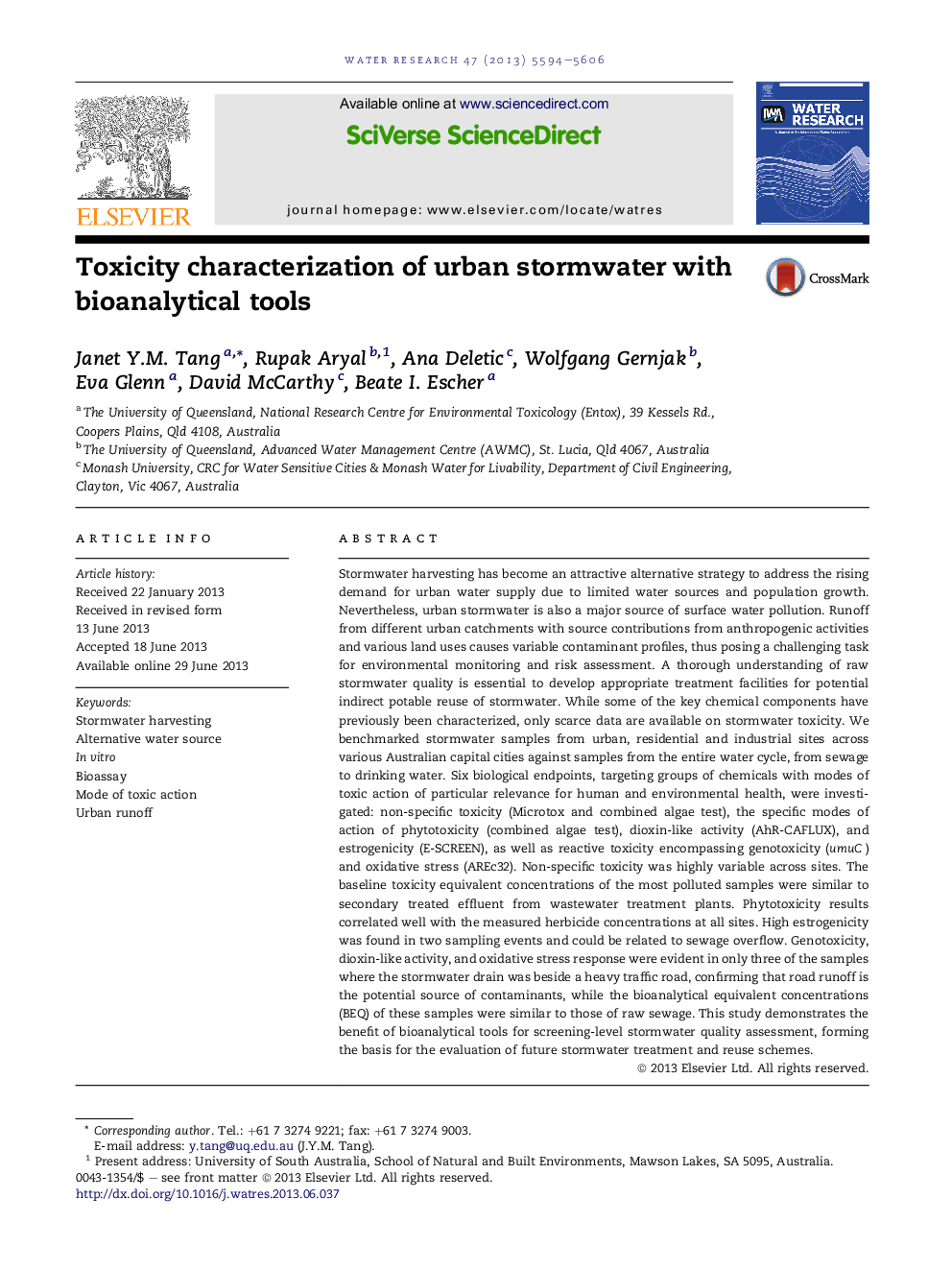| کد مقاله | کد نشریه | سال انتشار | مقاله انگلیسی | نسخه تمام متن |
|---|---|---|---|---|
| 6367460 | 1316842 | 2013 | 13 صفحه PDF | دانلود رایگان |
- Benchmarking stormwater quality for the first time with six in vitro bioassays.
- Spatial and temporal differences in toxicological profiles of raw urban stormwater.
- The phytotoxicity bioassay is more sensitive than chemical analysis of herbicides.
- Estrogenicity can be used as marker for sewage overflow contamination.
- Oxidative stress is a sensitive endpoint as early indicator for water contamination.
Stormwater harvesting has become an attractive alternative strategy to address the rising demand for urban water supply due to limited water sources and population growth. Nevertheless, urban stormwater is also a major source of surface water pollution. Runoff from different urban catchments with source contributions from anthropogenic activities and various land uses causes variable contaminant profiles, thus posing a challenging task for environmental monitoring and risk assessment. A thorough understanding of raw stormwater quality is essential to develop appropriate treatment facilities for potential indirect potable reuse of stormwater. While some of the key chemical components have previously been characterized, only scarce data are available on stormwater toxicity. We benchmarked stormwater samples from urban, residential and industrial sites across various Australian capital cities against samples from the entire water cycle, from sewage to drinking water. Six biological endpoints, targeting groups of chemicals with modes of toxic action of particular relevance for human and environmental health, were investigated: non-specific toxicity (Microtox and combined algae test), the specific modes of action of phytotoxicity (combined algae test), dioxin-like activity (AhR-CAFLUX), and estrogenicity (E-SCREEN), as well as reactive toxicity encompassing genotoxicity (umuC) and oxidative stress (AREc32). Non-specific toxicity was highly variable across sites. The baseline toxicity equivalent concentrations of the most polluted samples were similar to secondary treated effluent from wastewater treatment plants. Phytotoxicity results correlated well with the measured herbicide concentrations at all sites. High estrogenicity was found in two sampling events and could be related to sewage overflow. Genotoxicity, dioxin-like activity, and oxidative stress response were evident in only three of the samples where the stormwater drain was beside a heavy traffic road, confirming that road runoff is the potential source of contaminants, while the bioanalytical equivalent concentrations (BEQ) of these samples were similar to those of raw sewage. This study demonstrates the benefit of bioanalytical tools for screening-level stormwater quality assessment, forming the basis for the evaluation of future stormwater treatment and reuse schemes.
155
Journal: Water Research - Volume 47, Issue 15, 1 October 2013, Pages 5594-5606
